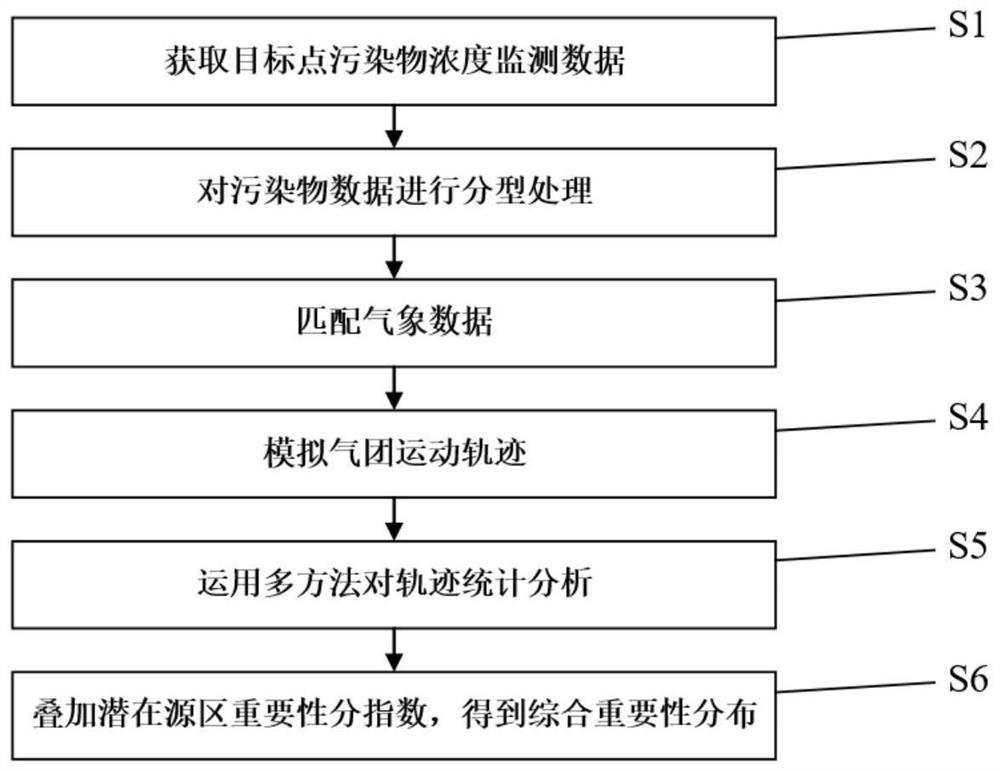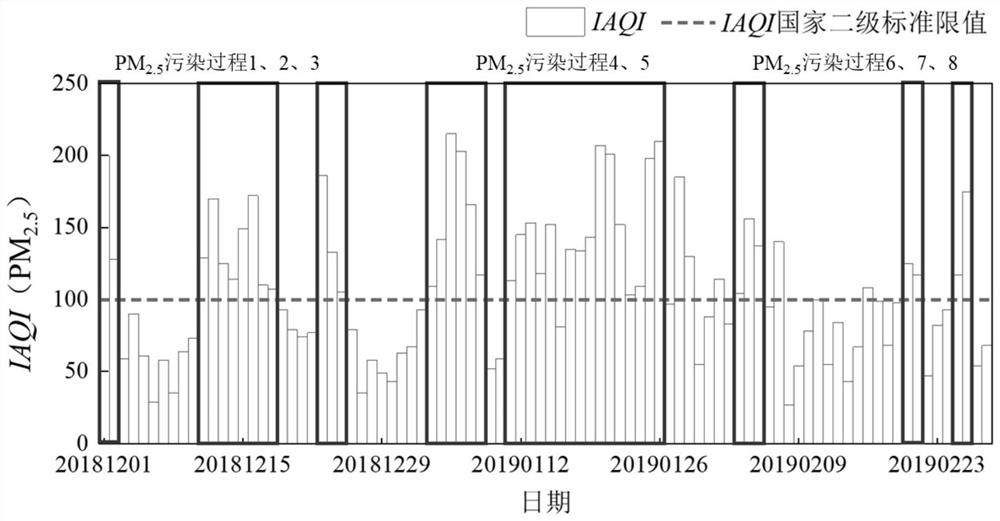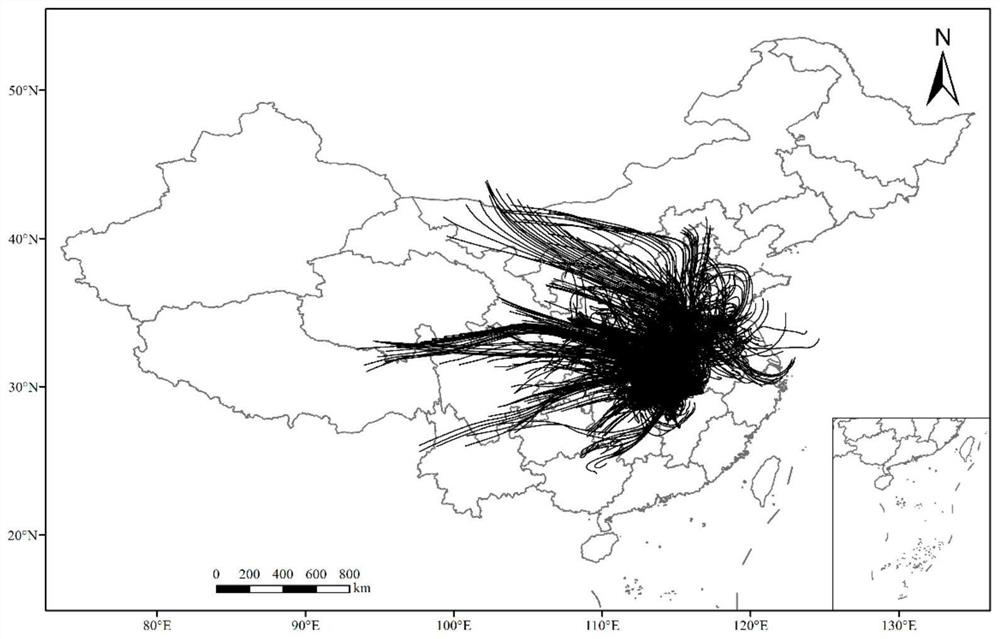Atmospheric pollution potential source region identification method based on pollution process typing
A classification method and source area technology, applied in resources, instruments, electrical digital data processing, etc., can solve problems such as data confusion, poor sensitivity, and inability to calculate trajectories, so as to improve accuracy, simplify data processing, and reduce interference. Effect
- Summary
- Abstract
- Description
- Claims
- Application Information
AI Technical Summary
Problems solved by technology
Method used
Image
Examples
Embodiment
[0061] A method for identifying potential source areas of air pollution based on pollution process classification provided by the present invention, such as figure 1 Shown, the present invention comprises the following steps:
[0062] Step S1: Obtain the monitoring data of pollutant concentration at the target point.
[0063] Specifically, taking Wuhan as an example, the pollutant concentration information in Wuhan from December 2018 to February 2019 was obtained through the ground ambient air quality monitoring station (30.56°N, 114.25°E), and arranged in chronological order.
[0064] The main monitoring indicators are: SO 2 , NO 2 , O 3 , CO, PM 10 and PM 2.5 There are 6 items in total.
[0065] The time accuracy of the concentration data is 1 hour, and the online monitoring system detects the average value hour by hour every day, and automatically generates the daily average value.
[0066] Step S2: Perform classification processing on the pollutant data.
[0067] S...
PUM
 Login to View More
Login to View More Abstract
Description
Claims
Application Information
 Login to View More
Login to View More - R&D Engineer
- R&D Manager
- IP Professional
- Industry Leading Data Capabilities
- Powerful AI technology
- Patent DNA Extraction
Browse by: Latest US Patents, China's latest patents, Technical Efficacy Thesaurus, Application Domain, Technology Topic, Popular Technical Reports.
© 2024 PatSnap. All rights reserved.Legal|Privacy policy|Modern Slavery Act Transparency Statement|Sitemap|About US| Contact US: help@patsnap.com










